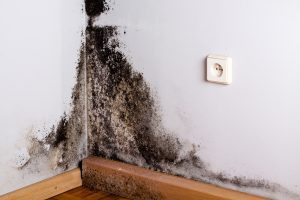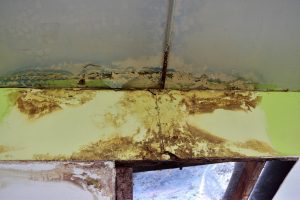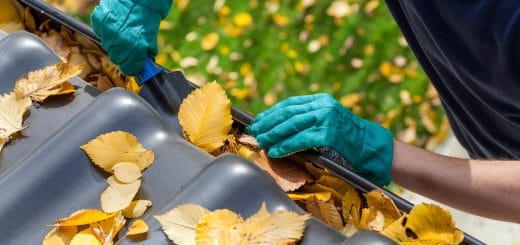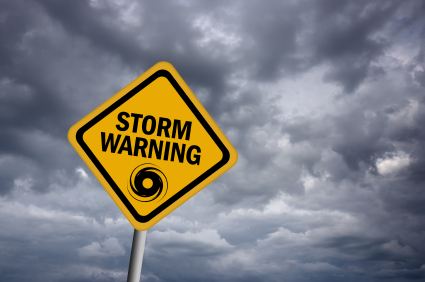Tips for Dealing with Mold in the Crawlspace
Removing moldMold is a type of fungus that grows in damp or humid conditi... More of any kind in any part of your home is not only expensive, it’s dangerous. But it surely won’t go away by itself. In fact, it will only grow worse with time, worsening any health issues you or your loved ones may be experiencing.
While this is certainly a big problem to face, crawlspaces are often one of the most common places for moldMold is a type of fungus that grows in damp or humid conditi... More of all types to develop. Due to the fact that moisture can accumulate in this small, unventilated area, it won’t take long before moldMold is a type of fungus that grows in damp or humid conditi... More sporesSpores are microscopic reproductive units of fungi or mold t... More start feeding on your home’s building materials.
So mold remediation can be expensive if it’s not covered by insurance, but as long as it hasn’t infested the entire area, there are ways you can remediate it yourself. Here you will learn all of the following about moldMold is a type of fungus that grows in damp or humid conditi... More in the crawlspace:
- Different Types of MoldMold is a type of fungus that grows in damp or humid conditi... More in the Crawlspace
- Preventing MoldMold is a type of fungus that grows in damp or humid conditi... More in the Crawlspace
- Identifying MoldMold is a type of fungus that grows in damp or humid conditi... More in the Crawlspace
- How to Remove MoldMold is a type of fungus that grows in damp or humid conditi... More in the Crawlspace
Different Types of Mold in the Crawlspace
According to the types of effects they have, there are three different ways to classify moldMold is a type of fungus that grows in damp or humid conditi... More:
1. Toxic Mold
Self-explanatory, these molds have the ability to produce mycotoxinsMycotoxins are toxic substances produced by certain types of... More that can cause severe health effects. They can cause these problems through: inhalation, ingestion, or simply by touch. They have also been known to cause immunosuppression problems and even cancer.

MoldMold is a type of fungus that grows in damp or humid conditi... More has the ability to grow anywhere as long as there is moisture and an organic food source.
Pathogenic Molds
For those with weak immune systems or prone to infections, this moldMold is a type of fungus that grows in damp or humid conditi... More is extremely toxic. Health issues such as bacterial pneumonia may take place if pathogenic moldMold is a type of fungus that grows in damp or humid conditi... More comes into contact with these individuals.
Allergenic Molds
While this type of moldMold is a type of fungus that grows in damp or humid conditi... More is the least harmful, caution should still be exercised when trying to remove it. But children especially are most prone to these allergenic molds due to the fact that their immune systems are still developing. When coming into contact with this moldMold is a type of fungus that grows in damp or humid conditi... More, symptoms including asthma and other breathing problems.
Preventing Mold in the Crawlspace
MoldMold is a type of fungus that grows in damp or humid conditi... More is able to grow almost anywhere in the home as long as there is a moisture and organic food source (AKA your building materials). But due to the lack of air circulation, high humidityHumidity is the amount of moisture or water vapor present in... More levels allow the moldMold is a type of fungus that grows in damp or humid conditi... More to prosper in the crawlspace. In fact, 60% of all homes contain moldMold is a type of fungus that grows in damp or humid conditi... More in the crawlspace!
So the best ways to keep moldMold is a type of fungus that grows in damp or humid conditi... More out of the crawlspace is to limit the moisture. To limit the moisture in the crawlspace, check out the following:
- Ensure that there are no cracks in the foundation walls
- Ensure that gutters and downspouts are clear and guide water away from the foundation
- Make sure that there is adequate ventilationVentilation is the process of exchanging or circulating air ... More in the crawlspace. If not, consider installing open vents to make the area “breathable.”
- If the crawlspace is vented, insulate against the sub floor above. Make sure to use fasteners or else it will just fall out over time. The vapor barrierVapor barrier is a material or layer designed to resist the ... More part of the insulationInsulation is a material used in buildings to reduce the tra... More should also be facing the sub floor.
- If there is insulationInsulation is a material used in buildings to reduce the tra... More already installed, make sure that it is dry and not sagging. If it contains water damage, it will need to be replaced.
- Ensure that there is plastic sheeting that covers the bottom of the crawlspace, lining the foundation walls. Check the walls to make sure that there is no water standing between the plastic sheeting and foundation walls.
- Inspect the air ducts and plumbing work for leaks.
- Make sure that the dryer vent leads air outside and not to the crawlspace.
Stay Safe While Preventing Mold
These tips and tricks should guarantee to keep moldMold is a type of fungus that grows in damp or humid conditi... More out of the crawlspace when followed correctly, but remember that your health and safety always come first. Inhaling any moldMold is a type of fungus that grows in damp or humid conditi... More sporesSpores are microscopic reproductive units of fungi or mold t... More can be lethal, if not dangerous – so it is extremely important to be wearing the proper gear.
If you haven’t been in the crawlspace of a home before, or don’t have any experience with moldMold is a type of fungus that grows in damp or humid conditi... More, it’s best to hire a mold remediation professional for your own safety.
Identifying Mold in the Crawlspace
While moldMold is a type of fungus that grows in damp or humid conditi... More really only needs moisture and an organic substance to grow, all of the conditions mentioned to grow create the perfect breeding grounds for the fungus to prosper:
- Moisture – caused by plumbing leaks, burst pipes, and humidityHumidity is the amount of moisture or water vapor present in... More
- Warmth – this is why moldMold is a type of fungus that grows in damp or humid conditi... More prospers in the spring and summer time
- Food – any type of organic material, such as drywall and insulationInsulation is a material used in buildings to reduce the tra... More will promote moldMold is a type of fungus that grows in damp or humid conditi... More growth
- Darkness – MoldMold is a type of fungus that grows in damp or humid conditi... More loves to grow undisturbed in darker areas – but keep in mind that it cannot grow in UV light.
- Time – MoldMold is a type of fungus that grows in damp or humid conditi... More growth can start in as little as 24 hours after water damage
But of course, the biggest condition you have to look out for is moisture. Attics are also known for holding ample amounts of moisture, hence they also prone to moldMold is a type of fungus that grows in damp or humid conditi... More growth.
Signs of Mold Growth
If you are suspicious of moldMold is a type of fungus that grows in damp or humid conditi... More growing on your property, there is more than one way to notice it other than health issues. All of the following include signs of potential moldMold is a type of fungus that grows in damp or humid conditi... More growth in the crawlspace:
- Musty Smells. In addition to untreated water damage, moldMold is a type of fungus that grows in damp or humid conditi... More and mildewMildew is a type of fungus that grows on damp surfaces, typi... More give off a strong musty smell that will be hard to miss. This can also be the sign of rotting wood or other porousPorous describes a material that contains small openings or ... More building materials.
- Excess Moisture. At this point, this indicator should be obvious. But you can also conduct a moisture check if you are unsure. Often times it will seep through the pipes and windows, to promote moldMold is a type of fungus that grows in damp or humid conditi... More growth.
- Higher Utility Bills. Signs of higher utility bills are a key indicator of a leaking A/C unit. But you may also find another unpleasant surprise to see the leak leading to moldMold is a type of fungus that grows in damp or humid conditi... More growth in your crawlspace.
- Pest and Wildlife Damage – During the fall season, rodents, birds, and other small pests will scour for shelter, invading their way into your crawlspace. And as soon as they get inside, they will more than likely cause holes that allows for water to flow in and cause moldMold is a type of fungus that grows in damp or humid conditi... More.
- Allergy and Health Issues – If anyone on the property is experiencing more health issues than usual, such as breathing problems, allergies, itchy or watery eyes, nose, mouth, or throat, coughing, etc., this is a prime indicator of moldMold is a type of fungus that grows in damp or humid conditi... More sporesSpores are microscopic reproductive units of fungi or mold t... More.
How to Remove Mold from the Crawlspace

Depending on the amount of moldMold is a type of fungus that grows in damp or humid conditi... More in the crawlspace, you may be able to remove it yourself using the steps listed below.
Now that we know so much about what kinds of moldMold is a type of fungus that grows in damp or humid conditi... More is able to invade the crawlspace and how susceptible it is to the damage, what can we do to remove it without breaking the bank?
While removing moldMold is a type of fungus that grows in damp or humid conditi... More is rather simple to do, it will take persistence and patience in order to be fully removed when doing it yourself. But when done correctly as long as the fungus hasn’t spread too far, you shouldn’t have to worry about it in the future (given that you are following the moldMold is a type of fungus that grows in damp or humid conditi... More preventionPrevention refers to actions taken to reduce the likelihood ... More steps above).
Follow these steps on how to remove mold from the crawlspace:
- Inspecting the Damage. Make sure to put on protective clothing, especially a face mask, before crawling under under the property. Look closely at what you are dealing with; depending on how far it has spread, it can be a long or short cleanup process.
- Preparing for Mold Remediation. Before even thinking about tackling moldMold is a type of fungus that grows in damp or humid conditi... More, make sure that there is proper ventilationVentilation is the process of exchanging or circulating air ... More so you won’t be inhaling moldMold is a type of fungus that grows in damp or humid conditi... More sporesSpores are microscopic reproductive units of fungi or mold t... More of any kind. Install fans in and around the crawlspace. You will also want set up some flood lights as well as a plastic barrier to see what what you are doing. When removing the mold, sporesSpores are microscopic reproductive units of fungi or mold t... More will fall on the plastic sheet.
- Applying the Mold-Removing Chemicals. There are a number of home remedies that can remove moldMold is a type of fungus that grows in damp or humid conditi... More. The beauty of it is that if one doesn’t work, you can always try something else. For small areas, you can use a liquid spray that will foam when applied. Just make sure to scrape it from the surface. Also remember to always read the instructions carefully before applying any product; if done improperly, the damage will only spread and/or you can get very sick.
- Blasting MoldMold is a type of fungus that grows in damp or humid conditi... More. For larger cases of moldMold is a type of fungus that grows in damp or humid conditi... More, you will want to use a surface blaster. Homes that are usually vacant for long periods of time or are poorly ventilated will likely have this problem.
- Using Surface-Blasting MoldMold is a type of fungus that grows in damp or humid conditi... More. When using a surface blaster, you will be removing the moldMold is a type of fungus that grows in damp or humid conditi... More from a number of surfaces using high-pressure particles. After reading the instructions carefully, make sure you are aiming the wand at least 2 feet away from the surface, ready, aim, and fire at the moldMold is a type of fungus that grows in damp or humid conditi... More. But despite working with a strong machine, removing large cases of moldMold is a type of fungus that grows in damp or humid conditi... More will require both persistence and time in order to remove it fully. You may have to continue blasting the moldMold is a type of fungus that grows in damp or humid conditi... More for weeks, depending on your situation.
Removing Mold Professionally
Despite the cheapest way to remove mold, doing it yourself is not always the best idea. If you don’t have any experience removing moldMold is a type of fungus that grows in damp or humid conditi... More or never crawled into the crawlspace before, mold remediationMold remediation is the process of identifying, removing, an... More can be an extremely dangerous job.
To make matters worse, letting moldMold is a type of fungus that grows in damp or humid conditi... More grow into an infestation will only result in increased health issues as well as extra time and money spent in remediation.
So often times it is best to work with a professional mold remediationMold remediation is the process of identifying, removing, an... More specialist. Their specialists have years of experience in removing moldMold is a type of fungus that grows in damp or humid conditi... More with professional products. They will locate all affected areas, assess the damage, contain the area, and effectively restore them to their original conditions.
A professional disaster restorationRestoration is the process of returning a property to its pr... More company can also restore the property from water damage, which is often the case with many mold remediationMold remediation is the process of identifying, removing, an... More and removal projects. As soon as you notice the damage, be sure to give them a call right away.












